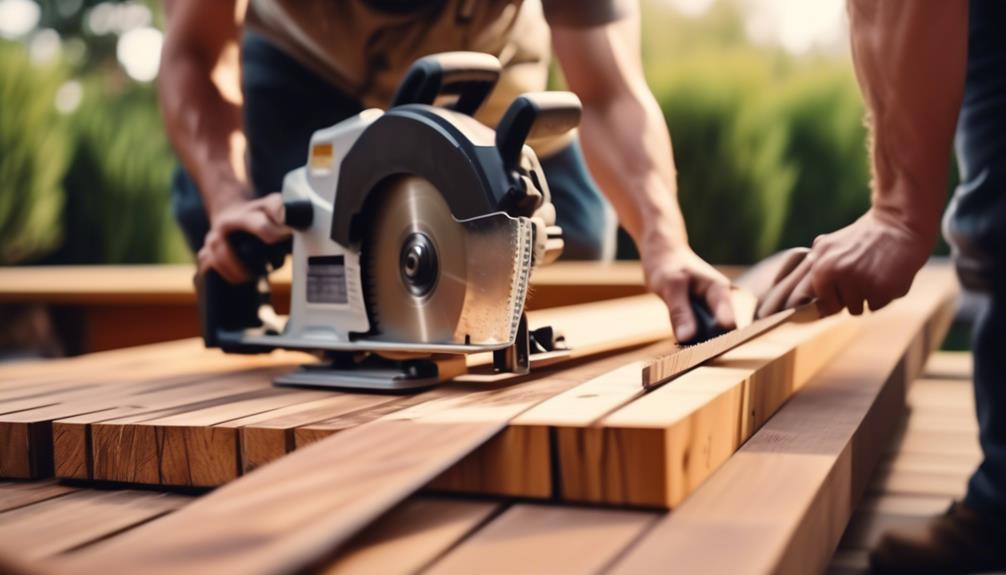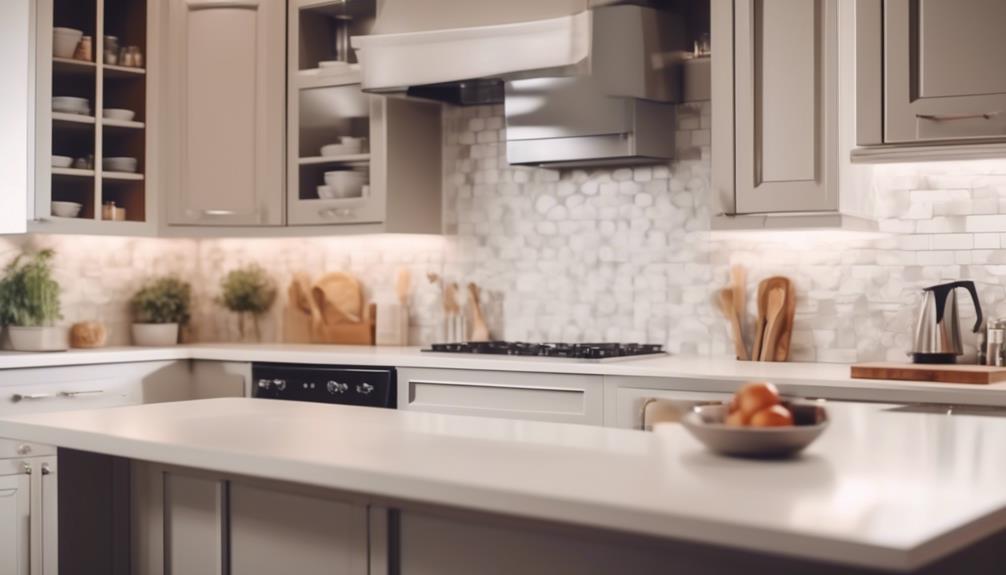As I stood in my small backyard, surrounded by a clutter of unused pots and a patchy lawn, it dawned on me that landscaping a small yard can be like solving a complex puzzle – the challenge lies in making the most of limited space and resources.
However, with a little creativity and a practical approach, it’s possible to transform a small yard into a charming outdoor oasis without breaking the bank. Over the years, I’ve discovered some affordable DIY landscaping tips that have helped me make the most of my compact outdoor space.
From choosing the right plants to maximizing vertical space, there are plenty of practical and resourceful ideas to explore. So, if you’re looking to breathe new life into your small yard, stick around to uncover some clever and cost-effective landscaping solutions that will make a big impact.
Key Takeaways
- Choose plants that serve multiple purposes and are suitable for your specific climate and soil conditions.
- Maximize vertical space by incorporating trellises, wall-mounted planters, and hanging baskets.
- Create defined pathways using stepping stones or pavers and enhance them with pathway lighting.
- Design a low-maintenance landscape by prioritizing durable and hardy plant species, utilizing ground covers and native plants, and incorporating hardscaping elements.
Choosing the Right Plants
When planning for a small yard, selecting the right plants is essential for maximizing the space and creating a visually appealing and functional landscape. Plant selection plays a crucial role in the overall garden layout. Opt for plants that serve multiple purposes, such as ornamental grasses that provide texture and privacy, or fruit-bearing shrubs that add beauty and yield a harvest.
Consider the mature size of the plants to ensure they fit well within the available space without overwhelming the yard. Additionally, choose plants that thrive in your specific climate and soil conditions to minimize maintenance and ensure long-term success.
When designing the garden layout, think about the overall aesthetic you want to achieve. Group plants with similar water and sunlight needs together to make maintenance easier. Incorporate vertical elements like trellises or hanging planters to maximize vertical space. Utilize different levels by including ground covers, mid-sized plants, and taller shrubs to create depth and visual interest.
Creative Use of Potted Gardens
To maximize space and add versatility to a small yard, consider the creative use of potted gardens. Container gardening is an excellent way to introduce greenery and color to a compact outdoor area without overwhelming it. By strategically placing potted plants, you can create visual interest, define different zones, and even grow your own herbs or vegetables. Here are some practical and resourceful ideas for incorporating potted gardens into your small space landscaping:
| Vertical Gardens | Hanging Gardens | Portable Gardens |
|---|---|---|
| Use trellises or wall-mounted planters to grow vines or tall plants vertically, maximizing space. | Hang baskets or pots from pergolas, eaves, or tree branches to add greenery without sacrificing ground space. | Utilize movable containers like wheeled planters or lightweight pots to easily rearrange your garden layout. |
| Choose climbing plants such as ivy, jasmine, or clematis for vertical growth. | Opt for trailing plants like petunias, ferns, or string of pearls to create a cascading effect. | Select herbs, small shrubs, or dwarf fruit trees for mobility and flexibility. |
| Ensure proper support for the weight of the plants and the containers. | Check the weight capacity of hanging fixtures and adjust based on the plant’s size and weight. | Use lightweight and durable materials for portable containers to facilitate easy movement. |
Maximizing Vertical Space
Considering the creative use of potted gardens in small yards, the next step is maximizing vertical space to optimize the available area. Vertical gardening is a game-changer for small yards, and there are several space-saving techniques to make the most of it.
One effective method is to install wall-mounted planters or shelves. These allow you to grow various plants without sacrificing precious ground space.
Another space-saving idea is to use hanging baskets or tiered plant hangers, which not only add greenery but also draw the eye upward, creating the illusion of a larger space.
Additionally, utilizing trellises or arbors can provide support for climbing plants, adding a beautiful vertical element to your yard.
To further maximize vertical space, consider incorporating a living wall or green facade. These innovative features not only add visual interest but also increase the overall greenery in your yard.
Furthermore, don’t overlook the potential of using tall, narrow plants to create a sense of height without taking up much ground space.
Creating Defined Pathways
One practical way to create defined pathways in a small yard is by using stepping stones or pavers to guide movement and define walking areas. When selecting pathway materials, consider the overall aesthetic of your yard. Natural stone, such as flagstone or slate, can add a rustic charm, while concrete pavers offer a more contemporary look. I personally prefer the versatility of pavers as they come in various shapes, sizes, and colors, allowing for endless design possibilities.
To enhance the functionality and visual appeal of the pathways, pathway lighting is essential, especially for small yards where space may be limited. Solar-powered lights are an excellent choice as they’re energy-efficient and easy to install without the need for wiring. Place them strategically along the pathways to illuminate the way and create a warm and inviting atmosphere during the evening hours.
Low-Maintenance Landscape Design

When designing a low-maintenance landscape for a small yard, it’s important to prioritize durable and hardy plant species that require minimal upkeep. Opt for drought-resistant plantings like lavender, yarrow, and ornamental grasses, as they’re well-suited for small yards and require little water once established.
Easy care garden design involves strategic placement of plants to minimize maintenance. Consider using ground covers such as creeping thyme or sedum to suppress weeds and reduce the need for mowing.
Integrate native plants into your landscape as they’re naturally adapted to the local climate and soil conditions, requiring less intervention. Embracing organic mulch not only helps to retain soil moisture but also reduces weed growth, saving you time and effort.
Additionally, hardscaping elements like gravel pathways and stone borders can add visual interest while minimizing the need for maintenance.
- 9 Affordable DIY Yard Renovation Ideas
- Beginner’s Seasonal Yard Maintenance Guide for London Homeowners
- 6 Best Eco-Friendly Yard Design Tips for a Sustainable Landscape
- Contact
- Affordable DIY Landscaping Tips for Small Yards
Frequently Asked Questions
Can I Use Artificial Plants Instead of Real Ones to Save Money and Maintenance Time?
I use artificial plants to save money and time. They’re cost-effective and low maintenance for my small yard. With a variety of options, they look real and add a vibrant touch to my landscaping.
How Can I Incorporate a Small Water Feature Into My Small Yard Without Taking up Too Much Space?
I’d love to share my approach to adding a small water feature. I’ve found that space-saving fountains or a small pond with a creative design can enhance the yard without overwhelming it. By maximizing greenery, the water feature becomes a natural focal point.
Are There Any Unique Ways to Incorporate Lighting Into My Small Yard for Added Ambiance?
I love enhancing my small yard with outdoor lighting. It’s a game-changer for creating ambiance. I’ve found that string lights, solar-powered lanterns, and LED spotlights are great affordable options. They add a cozy and inviting atmosphere.
What Are Some Creative Ways to Add Seating Areas Without Sacrificing Valuable Space?
To create creative seating options in a small yard without sacrificing space, I’d go for built-in benches or multi-functional furniture. Adding a cozy corner with a compact bistro set or hanging hammock can also maximize space while providing comfortable seating.
Can I Create a Small Vegetable or Herb Garden in My Small Yard, and if So, How Can I Maximize the Space for This Purpose?
Yes, I can create a small vegetable or herb garden. I’d opt for vertical gardening using space-saving containers to maximize space. Companion planting and raised beds are excellent for small yards, ensuring efficient use of limited space.
Conclusion
In conclusion, with the right plants and creative use of potted gardens, anyone can transform their small yard into a beautiful and functional outdoor space. By maximizing vertical space and creating defined pathways, you can create a stunning landscape that enhances the value and enjoyment of your home.
Incorporating low-maintenance design and affordable DIY landscaping tips can help you achieve this transformation. With a little creativity and effort, even the smallest yards can become a peaceful retreat.

